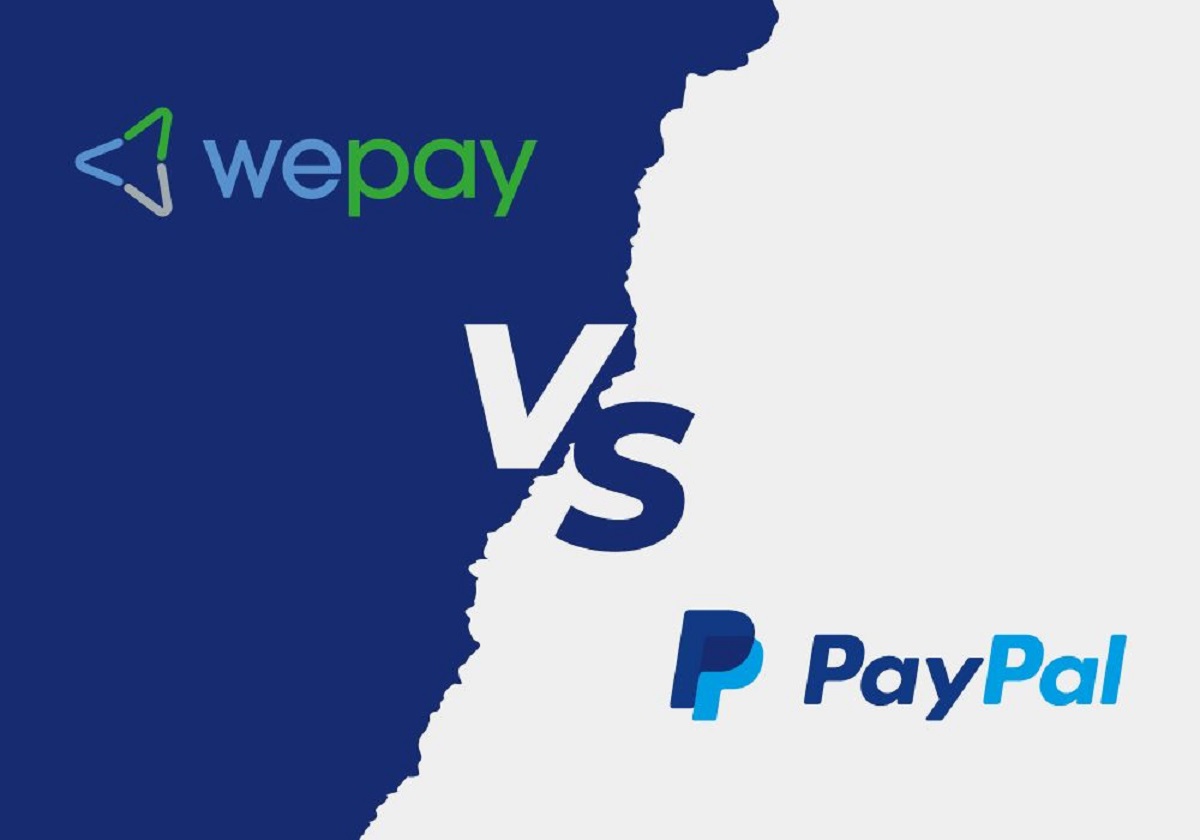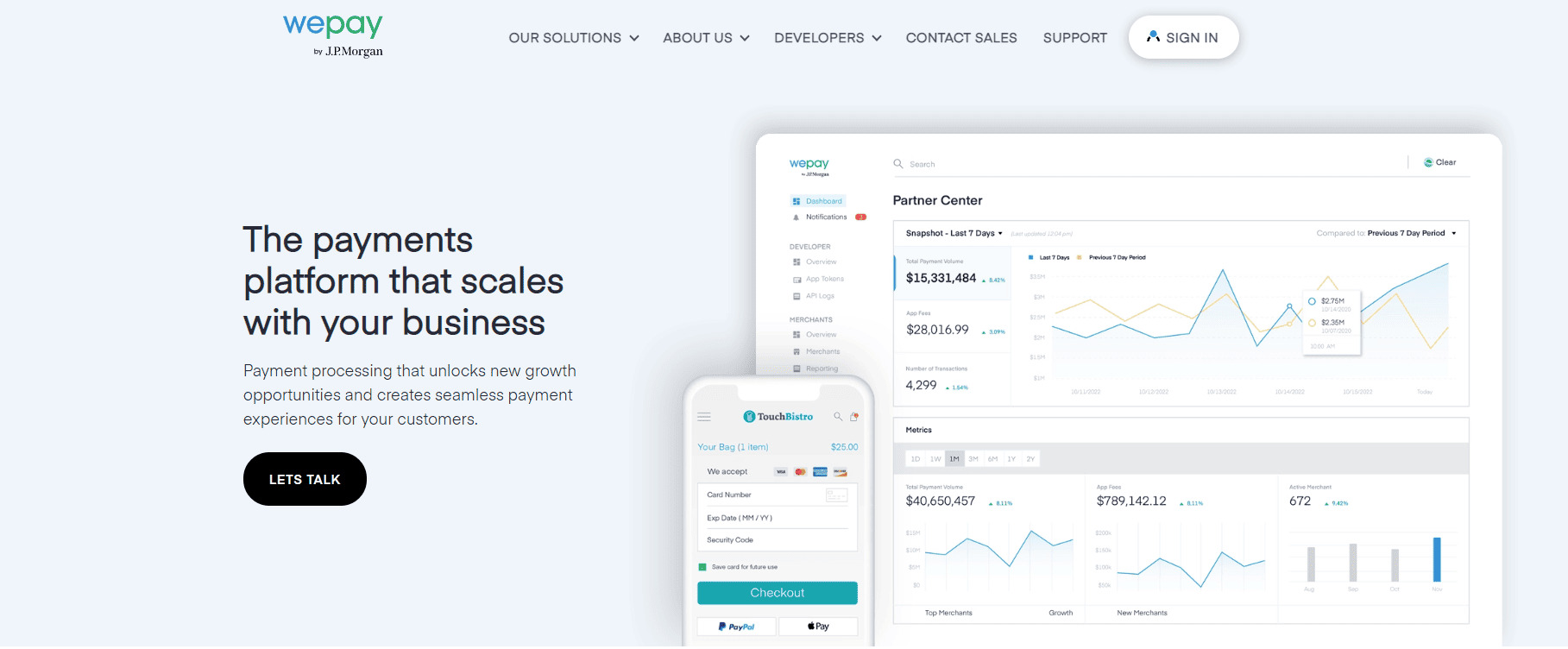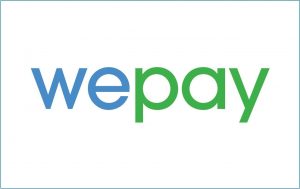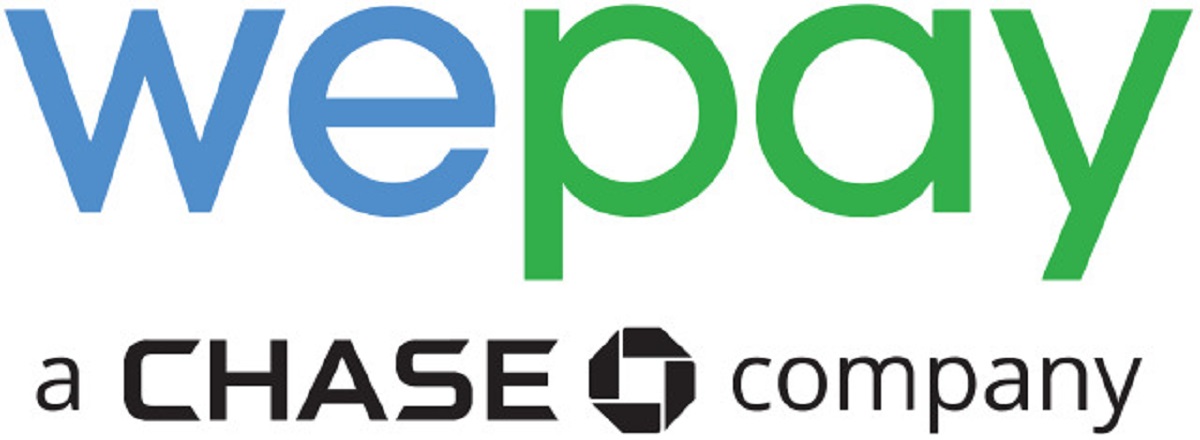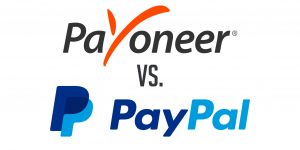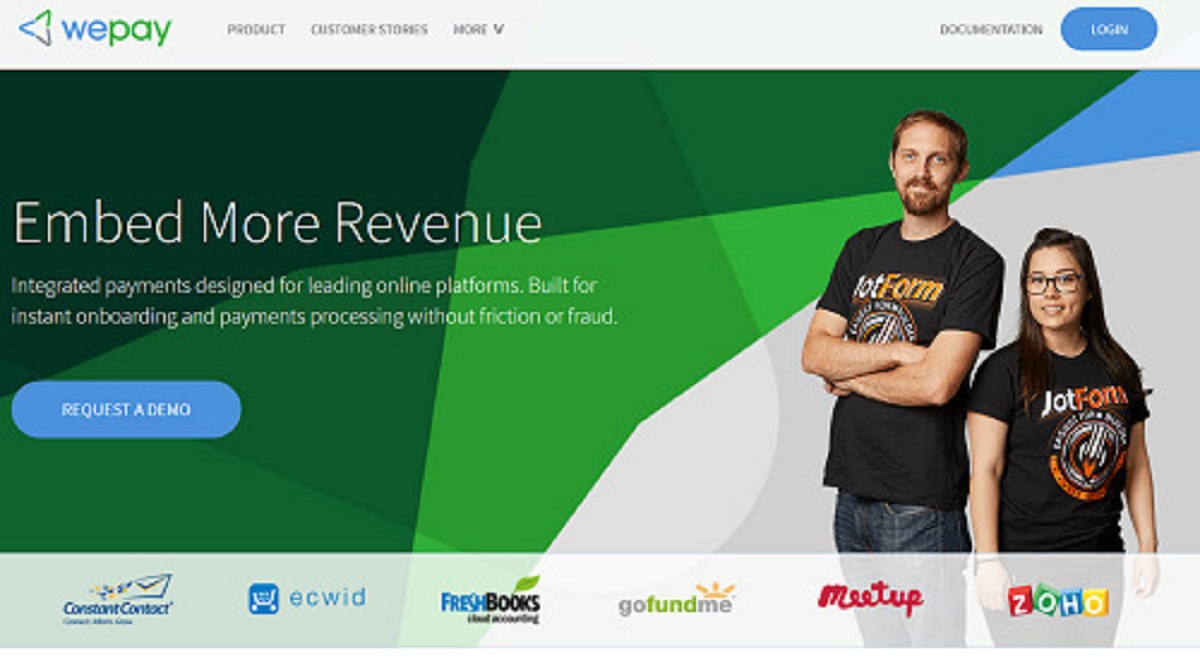Introduction
In the fast-paced world of ecommerce, having a reliable and efficient payment processing system is crucial for businesses to thrive. Two popular options that offer seamless online transactions are WePay and PayPal. Both platforms have gained a solid reputation for their secure and user-friendly features. However, when it comes to choosing between the two, it’s important to understand the unique advantages and drawbacks of each.
WePay is a rapidly growing payment processor that primarily focuses on providing solutions for small to medium-sized businesses and crowdfunding platforms. Founded in 2008, WePay offers a range of online payment services, including invoicing, virtual terminal, and donation processing. They place a strong emphasis on providing a personalized experience for their customers, with robust API integrations and customizable payment forms.
On the other hand, PayPal is one of the pioneering payment processors in the industry, serving millions of merchants and individuals worldwide. Established in 1998, PayPal has an extensive range of services that cater to various business sizes. Their platform allows users to send and receive payments securely, either through a PayPal account or with a credit or debit card. PayPal is widely recognized for its widespread acceptance and user-friendly interface.
When deciding which payment processor is best for your business, it’s essential to consider factors such as integration options, ease of use, security, pricing, payment options, customer support, and user reviews. By comparing the strengths and weaknesses of WePay and PayPal, you can make an informed choice that aligns with your business needs and goals.
WePay Overview
WePay is a payment processing platform that specializes in serving small to medium-sized businesses and crowdfunding platforms. They offer a range of services designed to streamline online transactions and provide a personalized experience for their customers.
One of the notable features of WePay is its robust API integrations, allowing businesses to seamlessly integrate WePay’s payment processing capabilities into their existing systems. This enables a smooth and efficient payment flow, reducing the need for manual processes and enhancing the overall user experience.
Additionally, WePay offers customizable payment forms that can be tailored to align with your brand’s aesthetics. This level of customization ensures a consistent and professional look throughout the payment process, which can help build trust with your customers.
Security is a top priority for WePay, and they utilize advanced fraud detection and prevention measures to safeguard transactions. They employ risk analysis algorithms and machine learning technology to identify and mitigate fraudulent activities, providing an added layer of protection for both businesses and customers.
In terms of pricing, WePay operates on a pay-as-you-go model, taking a percentage fee for each transaction made through their platform. This can be advantageous for businesses with fluctuating sales volumes, as it eliminates the need for fixed monthly costs.
WePay also offers a range of payment options, including credit cards, bank transfers, and digital wallets. This enables businesses to cater to a variety of customer preferences and increase their chances of completing a sale.
When it comes to customer support, WePay prides itself on providing responsive and knowledgeable assistance. Their support team is readily available to address any inquiries or issues that may arise, ensuring a smooth and uninterrupted payment processing experience.
Overall, WePay offers a comprehensive suite of payment processing solutions, with a focus on customization and seamless integration. Their services are tailored to the needs of small to medium-sized businesses and crowdfunding platforms, making them a compelling choice for businesses looking for a reliable and user-friendly payment processing solution.
PayPal Overview
PayPal is one of the most recognized and widely used payment processors in the world. Established in 1998, PayPal has been empowering individuals and businesses to send and receive payments securely through their platform.
One of the key advantages of using PayPal is its widespread acceptance. With millions of merchants and individuals using PayPal, customers are likely to already have a PayPal account, making it easier for them to complete transactions on your website. This broad reach can help increase conversion rates and expand your customer base.
PayPal provides a user-friendly interface that makes it effortless for businesses of all sizes to get started. Setting up a PayPal account is quick and straightforward, allowing you to start accepting payments online without needing extensive technical knowledge or experience.
Another noteworthy feature of PayPal is its Buyer and Seller Protection programs. These programs offer an added layer of security for both buyers and sellers, helping to reduce the risk of fraudulent transactions. Buyer Protection ensures that customers can safely shop online, knowing that their purchases are covered in case of any issues. Seller Protection helps businesses mitigate the risk of fraudulent chargebacks, offering peace of mind when selling goods or services.
When it comes to pricing, PayPal offers transparent and competitive rates. They charge a fixed percentage fee for each transaction, allowing businesses to accurately predict their payment processing costs. Additionally, PayPal offers different pricing plans and packages tailored to the specific needs of various businesses.
PayPal provides a variety of payment options to cater to a wide range of customer preferences. Customers can choose to pay with their PayPal account balance, credit or debit cards, or even link their bank accounts for seamless transactions. This flexibility ensures convenience for customers and high conversion rates for businesses.
Customer support is another area where PayPal excels. They offer multiple channels for support, including phone, email, and live chat. PayPal’s support team is available around the clock to address any questions or concerns from users, ensuring a smooth and reliable payment processing experience.
In summary, PayPal is a trusted and widely accepted payment processing platform that offers a user-friendly interface, rigorous security measures, competitive pricing, and excellent customer support. Its extensive reach and flexibility make it an appealing choice for businesses of all sizes, seeking a reliable payment solution.
Integration Options
When choosing a payment processing platform, one crucial factor to consider is the integration options available. The ease and flexibility of integrating a payment processor with your existing systems and website can significantly impact the overall efficiency of your ecommerce operations.
Both WePay and PayPal offer a range of integration options to suit different business needs.
WePay stands out with its robust API integrations, allowing businesses to seamlessly connect WePay’s payment processing capabilities with their existing systems. This makes it easier to incorporate WePay into your website or mobile app, providing a seamless payment experience for your customers. WePay’s API documentation is comprehensive and user-friendly, providing developers with the necessary tools and resources to integrate WePay effectively.
On the other hand, PayPal also offers a variety of integration options. They provide straightforward integrations for popular ecommerce platforms like Shopify, WooCommerce, and Magento, making it hassle-free to set up PayPal as your payment processor. Additionally, PayPal provides a range of APIs and developer tools, empowering businesses to create customized integrations to fit their specific requirements.
Both WePay and PayPal offer plugins and extensions for popular content management systems like WordPress, making it easy to incorporate their payment processing features into your website without extensive coding or development skills. These plugins often provide a simple and user-friendly interface for managing payments and transactions.
Furthermore, both platforms offer mobile SDKs (Software Development Kits) for iOS and Android, enabling businesses to create mobile apps with integrated payment processing functionality. This allows for a seamless and convenient mobile payment experience for customers on the go.
Ultimately, the choice between WePay and PayPal in terms of integration options will depend on various factors such as your existing systems, technical expertise, and specific integration requirements. It’s important to assess your needs and evaluate the available options to determine which platform offers the most suitable integration solution for your business.
Ease of Use
When it comes to payment processing platforms, ease of use plays a vital role in ensuring a smooth and hassle-free experience for both businesses and customers. Both WePay and PayPal strive to offer user-friendly interfaces and intuitive features to simplify the payment process.
WePay prides itself on providing a seamless user experience. Their platform is designed with simplicity in mind, making it easy for businesses to navigate and manage their payments. WePay offers a clean and intuitive dashboard that allows users to view transaction details, generate invoices, and monitor payment activity. The user interface is designed to be straightforward, even for those with limited technical expertise.
Additionally, WePay’s customizable payment forms enable businesses to create a branded and professional look throughout the checkout process. This level of customization enhances the overall user experience and builds trust with customers.
PayPal also excels in terms of ease of use. With a long-standing reputation as one of the industry’s leading payment processors, PayPal has refined its user interface to be intuitive and user-friendly. Signing up for a PayPal account is a straightforward process that requires minimal effort. Upon registration, users have quick access to essential features like sending and receiving payments, managing account settings, and viewing transaction history.
PayPal’s user interface is designed to be accessible and understandable for individuals with varying levels of technical expertise. The platform provides clear instructions and guidance to users, ensuring a smooth onboarding experience for businesses and a seamless payment process for customers.
Furthermore, PayPal’s integration options with popular ecommerce platforms and content management systems simplify the setup process for businesses. These pre-built integrations often come with intuitive interfaces and user-friendly dashboards, making it easier for businesses to manage their payments without extensive technical knowledge.
Both WePay and PayPal offer mobile applications for iOS and Android, allowing users to manage transactions and monitor their accounts on the go. These mobile apps provide a seamless and convenient way for businesses to stay connected with their payment processing activities no matter where they are.
In summary, both WePay and PayPal prioritize ease of use, providing user-friendly interfaces and intuitive features that simplify the payment process. Whether you’re managing transactions through a desktop or mobile device, both platforms strive to deliver a seamless and hassle-free experience for businesses and customers.
Security
Security is a critical aspect of any payment processing platform. With the increasing prevalence of cyber threats and fraudulent activities, businesses must choose a payment processor that prioritizes the protection of sensitive customer data and offers robust security measures. Both WePay and PayPal place a strong emphasis on security and take significant steps to safeguard transactions and user information.
WePay implements various security measures to ensure the safety of transactions. They employ industry-standard encryption protocols to protect data during transmission, minimizing the risk of unauthorized access. WePay also utilizes advanced fraud detection and prevention tools, such as risk analysis algorithms and machine learning technology. These tools help detect and mitigate fraudulent activities, providing businesses and customers with an additional layer of protection.
Furthermore, WePay complies with Payment Card Industry Data Security Standard (PCI DSS) requirements. This certification ensures that businesses using WePay’s payment processing services meet strict security standards and adhere to best practices for protecting sensitive cardholder data. WePay also undergoes regular security audits and maintains a dedicated team to address any potential security vulnerabilities.
Similarly, PayPal places significant emphasis on security and has a strong track record in protecting customer information. As a trusted and highly reputable payment processor, PayPal has stringent security measures in place to safeguard transactions and user data.
PayPal utilizes industry-standard encryption and tokenization technology to protect sensitive information during transmission and storage. They offer advanced fraud screening tools and monitor transactions for suspicious activities, providing added security for both businesses and customers.
PayPal is also PCI DSS compliant, ensuring that businesses using their payment processing services adhere to strict security standards. As part of their Buyer and Seller Protection programs, PayPal offers coverage and reimbursement for eligible transactions, providing an additional layer of security and peace of mind for online buyers and sellers.
Both WePay and PayPal have dedicated security teams that actively monitor and respond to potential security threats. They keep up with the latest industry standards and updates to ensure ongoing protection for their users.
It’s important to note that no payment processor can guarantee 100% security. However, both WePay and PayPal have established strong security infrastructures to minimize risks and provide a secure payment processing environment for businesses and customers.
In summary, both WePay and PayPal prioritize security and employ robust measures to protect transactions and user data. By implementing industry-standard encryption, advanced fraud detection tools, and adhering to PCI DSS requirements, both platforms provide businesses with the confidence that their customers’ payment information is secure.
Pricing
When it comes to payment processing, understanding pricing structures is crucial for businesses to make informed decisions. Both WePay and PayPal offer transparent pricing models, but there are differences to consider.
WePay operates on a pay-as-you-go model, charging a percentage fee for each transaction made through their platform. This means that businesses only pay fees when they make sales, making it flexible for companies with fluctuating sales volumes or seasonal businesses. WePay’s transaction fees may vary depending on factors such as the type of business and the volume of transactions. It’s important to review and compare their fee structure to accurately assess the costs involved.
WePay also has additional fees for specific services, such as chargebacks, refunds, or bank transfers. It is important for businesses to familiarize themselves with these additional fees and factor them into their overall cost analysis.
On the other hand, PayPal offers various pricing plans and options tailored to different business sizes and needs. Their fees are based on a tiered structure that takes into account monthly sales volumes. The more sales a business processes through PayPal, the lower the percentage fee per transaction. PayPal also offers discounted rates for nonprofit organizations and businesses with high transaction volumes.
It’s important to note that PayPal has standard transaction fees, but additional fees may apply for certain services like currency conversion, chargebacks, or international transactions. Businesses should carefully review and consider these additional fees when assessing the overall cost.
In terms of setup and account maintenance fees, both WePay and PayPal do not charge any upfront costs to create an account. However, it’s always a good practice to review the terms and conditions and fee schedules of both platforms to fully understand the costs associated with using their services.
When comparing pricing, it’s essential for businesses to evaluate their specific needs and sales volumes. The nature of the business, transaction volume, and average transaction size should all be factors to consider in order to accurately assess the costs and determine which payment processor offers the most advantageous pricing structure.
It’s also essential to consider the value and features offered by each payment processor and evaluate the overall return on investment. While competitive pricing is crucial, businesses should also consider factors such as ease of use, integration options, security, and customer support to make a well-rounded decision.
In summary, WePay and PayPal offer different pricing structures to accommodate various business needs. WePay operates on a pay-as-you-go model with percentage-based fees per transaction, while PayPal offers tiered pricing based on monthly sales volumes. It’s important for businesses to review and compare the pricing models, additional fees, and consider their specific needs and sales volumes when making a decision.
Payment Options
When it comes to payment processing, offering a variety of payment options is crucial for businesses to accommodate different customer preferences and increase conversion rates. Both WePay and PayPal provide multiple payment options, allowing businesses to cater to a wide range of customers.
WePay offers flexibility when it comes to payment options. They support major credit cards, including Visa, Mastercard, American Express, and Discover. Additionally, WePay allows businesses to accept payments through bank transfers, enabling customers to make payments directly from their bank accounts. This option can be convenient for customers who prefer not to use credit cards or digital wallets.
WePay also supports digital wallets such as Apple Pay and Google Pay. This enables customers who have stored their payment information in these wallets to make purchases quickly and conveniently. By offering these wallet options, businesses can provide a streamlined checkout experience, reducing friction and enhancing customer satisfaction.
PayPal, on the other hand, offers a wide array of payment options. Customers can make payments using their PayPal account balance, which allows them to maintain a separate digital wallet for online purchases. PayPal also enables customers to link their credit and debit cards to their PayPal account, providing a convenient way to make payments without directly sharing their card information with merchants.
In addition to digital wallets and linked cards, PayPal supports bank transfers as a payment option. Customers can link their bank account to their PayPal account, allowing for direct transfers between their bank and PayPal. This payment option is ideal for customers who prefer this method for online transactions.
With PayPal, customers can also choose to pay with credit or debit cards without having a PayPal account. This flexibility allows businesses to cater to customers who may not have a PayPal account but still want to make a purchase using their preferred card.
Both WePay and PayPal offer mobile payment options, allowing customers to pay using their smartphones. WePay supports mobile wallets such as Apple Pay and Google Pay, while PayPal provides its own mobile app for seamless transactions on the go. These mobile payment options allow businesses to tap into the growing mobile commerce trend and capture sales from customers who prefer using their mobile devices for payments.
Ultimately, the availability and variety of payment options offered by WePay and PayPal give businesses the opportunity to provide a seamless and convenient payment experience for their customers. By offering a range of options, businesses can increase their chances of completing a sale and cater to the diverse preferences of their customer base.
Customer Support
When it comes to payment processing, having reliable and accessible customer support is essential for businesses to address any issues or concerns promptly. Both WePay and PayPal understand the importance of responsive customer support and aim to provide assistance to their users.
WePay prides itself on offering responsive and knowledgeable customer support. Their support team is readily available to address inquiries or resolve issues that may arise during the payment process. Businesses can reach out to WePay’s support team through email, phone, or live chat, ensuring multiple channels for assistance. WePay also provides an extensive knowledge base and documentation, offering self-help resources for businesses and developers.
Additionally, WePay has a dedicated support team that specializes in different aspects of their payment processing platform. Whether businesses have technical questions, need assistance with integration, or require help with account management, WePay strives to provide personalized and targeted support to meet their users’ specific needs.
PayPal also offers comprehensive customer support to businesses and individuals using their payment processing services. They provide multiple support channels, including phone support, email support, and a robust help center that covers a wide range of topics and frequently asked questions. PayPal’s help center offers guides, tutorials, and troubleshooting resources to assist users in navigating the platform and resolving common issues.
Furthermore, PayPal has a community forum where users can interact with each other, share experiences, and get insights from other PayPal users. This collaborative community can be a valuable resource for businesses seeking advice or information related to payment processing.
In addition to their general support channels, both WePay and PayPal offer a dedicated support team for businesses with specific needs, such as high-volume accounts or enterprise-level support. This ensures that businesses receive the assistance they require, tailored to their unique requirements.
It’s important to note that the level and quality of customer support may vary based on the specific needs and experiences of individual users. It’s advisable for businesses to review customer feedback and testimonials to get a sense of the overall customer support experience provided by both WePay and PayPal.
In summary, both WePay and PayPal strive to offer responsive and reliable customer support. Their support teams are available through various channels, and they provide resources and documentation to assist businesses with their payment processing needs. By offering accessible customer support, both platforms aim to ensure a smooth and trouble-free experience for their users.
User Reviews
When considering payment processing options, it’s valuable to take into account the experiences and feedback of businesses and individuals who have used the platforms. User reviews can provide insights into the strengths and weaknesses of WePay and PayPal, helping businesses make informed decisions.
WePay has received generally positive reviews from users. Many businesses appreciate the seamless integration options and customization features that WePay offers. Users have reported that the platform is straightforward to set up and use, with a user-friendly interface. Customers also commend WePay’s responsive customer support, noting that their inquiries and concerns are addressed promptly and efficiently. However, a small number of users have reported occasional issues with transaction delays or customer service response times.
PayPal has a large user base and has garnered mixed reviews. Positive reviews highlight PayPal’s wide acceptance and the convenience it provides to customers who already have PayPal accounts. Businesses appreciate the straightforward setup process and the range of payment options available to customers. Users also praise PayPal’s reliable payment processing and strong buyer and seller protection programs. However, some users have raised concerns about occasional account freezes or holds, which can be frustrating for businesses. Additionally, a few users have reported difficulty reaching customer support or delays in issue resolution.
When analyzing user reviews, it’s important to consider that experiences can vary based on individual circumstances and business requirements. Factors such as transaction volume, account type, and industry may influence the user experience. It’s advisable to read a range of reviews to gain a comprehensive understanding of the platforms’ strengths and weaknesses.
Businesses should also consider their specific needs and preferences when weighing user reviews. Factors such as integration options, pricing, security features, payment options, and customer support should be evaluated alongside user feedback to make an informed decision.
In summary, user reviews of both WePay and PayPal highlight positive experiences with seamless integration, user-friendly interfaces, and accessible customer support. However, it’s essential to consider the individual needs and preferences of your business when assessing the relevance of user reviews.
Conclusion
Choosing the right payment processing platform for your business is a crucial decision that can impact your operations and customer experience. WePay and PayPal are both popular options that offer a range of features and services to meet the needs of businesses of all sizes.
WePay stands out for its robust API integrations, customizable payment forms, and focus on personalized experiences. It caters well to small to medium-sized businesses and crowdfunding platforms. WePay also offers responsive customer support and competitive pricing based on a pay-as-you-go model.
On the other hand, PayPal is a well-established payment processor with a wide user base and global recognition. It offers seamless integrations with popular ecommerce platforms, a user-friendly interface, and a versatile range of payment options. PayPal also provides strong buyer and seller protection programs and comprehensive customer support.
When making a decision between WePay and PayPal, it’s important to consider several factors. Integration options should be evaluated based on your existing systems, technical expertise, and specific requirements. Pricing structures should be assessed based on your sales volumes and overall cost analysis. Security measures are crucial and should align with your business’s commitment to protect sensitive customer data. Payment options should accommodate a diverse range of customer preferences. Customer support availability and responsiveness should be considered to address any inquiries or issues that may arise.
Ultimately, the choice between WePay and PayPal will vary depending on your business’s unique needs, priorities, and goals. It’s advisable to conduct thorough research, compare the features, read user reviews, and potentially test both platforms to determine which one aligns best with your requirements.
By carefully evaluating these factors and considering your specific business needs, you can confidently choose the payment processing platform that will provide a seamless and secure payment experience for your customers and help drive the success of your business.







